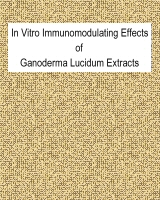
Our in vitro studies indicated that various extracts of G. lucidum when cocultivated with peripheral blood mononuclear cells could enhance the expression of helper/inducer (CD4) phenotype and enhance the mitogenic effect of PHA. CD8+ T cells were not affected suggesting that the immunomodulating of effect on CD4+ T cells was selective. Changes in T cell phenotype and T cell function may explain the observed immunomodulating effects of G. lucidum. Among the 3 extracts of G. lucidum used in this study, Bioherb appeared tobe the most potent one. Our observation that Bioherb was more active than lentinan implies that there might be some other active ingredients in G. lucidum other than lentinan, the well known active ingredient in many edible mushrooms (Hamuro et al 1974). However, the immunomodulating effect could be demonstrated in only a fraction of individuals. This was particularly true for those with mild to moderate immunodeficiency (asymptomatic HIV-infected individuals and PGL) as compared to normal individuals or patients with severe immune deficiency (ARC and AIDS). This puts G. lucidum in the category of immunorestorer rather than immunostimulator, but of only modest activity, i.e., ineffective in severely immunosuppressedsubjects. The pattern of response of different individuals, i.e., responder or non-responder, was quite consistent as evidenced by the same pattern of response when the study was repeated in the same individuals.
